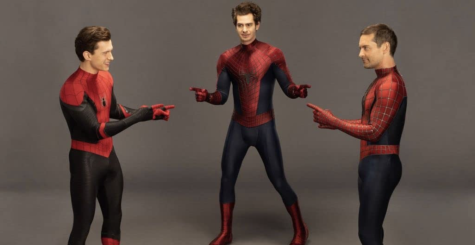When You’re Wearing a Mask, You’re Actually Saving Lives

Teenagers, we’ve all heard these sayings many times: wear a mask, practice social distancing, wash your hands, don’t touch your face. At this point, I think it’s safe to say that we may even be tired of hearing these phrases, especially when the virus doesn’t seem to affect us as much as some other people. Why should we heed these warnings if the virus doesn’t seem to affect us as much? A lot of times, people tell us rules without telling us the reason behind them. In this article, I’ll tell you why you need to wear masks and also how wearing masks can actually save lives.
We’ve heard all this talk about COVID, but what is it?
Coronavirus disease (COVID) is a disease that results from a coronavirus entering your body, multiplying, and damaging your cells. SARS-CoV-2, a member of the coronavirus family, is the virus that causes COVID-19. Most of the time, coronaviruses cause mild respiratory illnesses such as the common cold. However, SARS-CoV-2 can do more damage. A SARS-CoV-2 viron (a single virus particle) is shaped like one of those spikey balls you can find at the dollar store. A sphere of protein protects the RNA (the virus’ genetic code) inside the ball. The protein sphere is covered in spikes, which aids the virus in attaching to proteins on the surface of cells. The spikey sphere is covered in a layer of fat for extra protection. Washing your hands often is good because soap dissolves fat, and therefore damages the SARS-CoV-2 viron.
Taking control
I previously mentioned that a SARS-CoV-2 viron is covered in spikes. These spikes help the viron to bind to a protein inside your body called ACE2. Normally, ACE2 regulates blood pressure, but when the virus binds to ACE2, the virus sets off chemical changes that allow RNA to enter the cell. Once the viral RNA enters the cell, it takes control and forces the host cell to make more copies of the virus. In hours, a cell can be forced to produce tens of thousands of new viruses which can infect other cells. The virus also prevents the host cell from sending signals to the immune system, encourages the cell to release more virons, and suppresses the cell’s immunity to the virus. In other words, the virus secures its control.
The virus is in my body. Now what?
Once the coronavirus enters your body, it can have a variety of effects, ranging from mild to severe. Young, healthy individuals usually experience milder effects of COVID. However, there have been many cases where youth have experienced severe symptoms. While the mortality rate for COVID is 3.4%, COVID does have long lasting effects, some of which include limited lung capacity and kidney complications which can lead to a long term need for dialysis. To those of you who enjoy sports, limited lung capacity can hinder your athletic performance because you won’t be able to breathe as well. While this might sound scary, there is no need to worry. There is a simple way to prevent yourself from getting the virus.
The wonders of masks
- Wearing masks provides a physical barrier. Coronavirus usually transmits through respiratory droplets. These respiratory droplets are emitted when a person breathes, talks, or sings. Droplets typically travel around 3 feet, but when a person coughs or sneezes powerfully, the droplets could travel as far as 18 feet, and social distancing 6 feet may not be enough to protect you from the droplets. This is why masks are helpful: they block the droplets from spreading.
- Mask protect you from others who might be sick. The level of how much a mask protects you from coronavirus varies. The N95 masks – the best masks – are typically reserved for healthcare workers. They block 95% of the coronavirus particles. The masks for the public are usually fabric masks and block 50% to 70% of particles. Here’s the scary thing: according to Dr. Anthony Fauci, director of National Institute of Allergy and Infectious Diseases (NIAID), around 25-50% of people with COVID are asymptomatic, meaning they do not show any symptoms, so they might not even know they are sick. This means that when you go out, people around you might have COVID, so you should be prepared, and the best way to do that is by wearing a mask.
- Masks serve as a reminder not to touch your face. Virus containing respiratory droplets can land on surfaces. When you touch those surfaces with your hands and then touch your eyes, nose, or mouth, you are basically inserting the virus into yourself. Masks serve as a reminder not to do that because when you try and touch your face and instead touch your mask, you are reminded that you aren’t supposed to touch your face.
- Masks serve as a social cue. Mask wearing might be one of the occasions where peer pressure is good. In an interview Dr. Inmaculada Rodriguez, an assistant research professor in mathematics at Duke, she said that “mask wearing has a lot to do with social norms in an area. In places with looser regulations and a lot of people not wearing masks, a person is less likely to wear one. On the flip side, in places with stricter regulations and more people wearing masks, a person is more likely to wear a mask because they feel pressured to by social norms.” This is all to say that if you wear a mask you are likely to encourage others to wear one as well because masks remind people that we are in the middle of a pandemic.
Flattening the Curve
Another reason for wearing mask is a concept called flattening the curve. Flattening the curve means slowing down the spread of COVID so that the amount of people who get COVID will be spread out over a longer period of time. But why would we want to do that? Well, there are two scenarios.
 We don’t practice social distancing, we don’t wear masks, and we continue life like the way we were in January. What happens is people get infected very quickly, but that rate goes down very quickly too. This might sound good, but we run into a major problem: we pass the healthcare capacity line. The healthcare capacity line is the point where there are not enough resources to treat all of the infected. This means there are not enough hospital beds, not enough doctors, and not enough equipment to treat everyone. As a result, more people die.
We don’t practice social distancing, we don’t wear masks, and we continue life like the way we were in January. What happens is people get infected very quickly, but that rate goes down very quickly too. This might sound good, but we run into a major problem: we pass the healthcare capacity line. The healthcare capacity line is the point where there are not enough resources to treat all of the infected. This means there are not enough hospital beds, not enough doctors, and not enough equipment to treat everyone. As a result, more people die.- We could slow the spread over a longer period of time by wearing masks and social distancing. The curve (the number of infected people) will not pass the healthcare capacity line, meaning that there will be enough hospital beds, enough doctors, and enough equipment to treat the infected. While the same amount of people is likely to get infected either way, this option ensures that less people die.
Wearing masks save lives?
A model by IHME shows that based on current projections, the predicted amount of deaths by Jan 1 is around 385,000. However, if everyone wears a mask that number can be reduced to around 322,000. That’s around 63,000 fewer deaths, and all you have to do is wear a mask. So, in a way, wearing one makes you a lifesaver. Now that’s something to add to your resume.
Some good news
We aren’t doing terribly when it comes to mask use. In a study done by The New York Times, 80% of people said they wear masks whenever they expect to be within 6 feet of others, 59% said they wear a mask when leaving the house, and 14% said they never wear mask. This isn’t awful, but “more studies show that if everyone wears mask (over 90% of the population), we can get the virus under control and decrease transmissions a lot” (Dr. Inmaculada Rodriguez). “With more contagious diseases like COVID, a higher portion of the population will need to wear mask in order to limit the spread” (Dr. Rodriguez). So, the solution is simple. If we want to limit the spread and control the virus, we need to wear mask.
References
https://www.technologyreview.com/2020/04/15/999476/explainer-how-does-the-coronavirus-work/
https://www.nytimes.com/interactive/2020/07/17/upshot/coronavirus-face-mask-map.html?smid=fb-share
https://www.healthline.com/health-news/covid-19-virus-wind-carry-6-feet
https://aip.scitation.org/doi/10.1063/5.0011960
https://covid19.healthdata.org/projections
https://coronavirus.jhu.edu/data/mortality
https://www.biospace.com/article/all-the-ways-we-know-that-you-can-get-coronavirus/
https://www.youtube.com/watch?v=XJyCc8QbWAE&feature=youtu.be&t=4822
https://www.healthline.com/health/coronavirus-vs-sars#whats-a-coronavirus
https://www.cancerquest.org/patients/covid-information-and-resources
https://www.today.com/shop/where-buy-fabric-masks-cause-online-t179650







